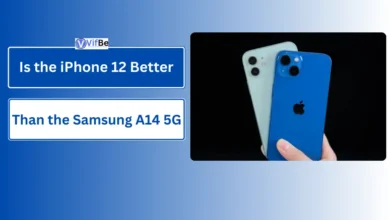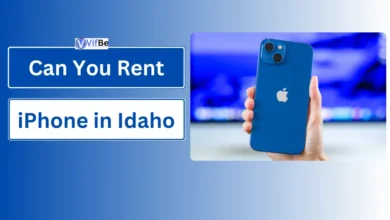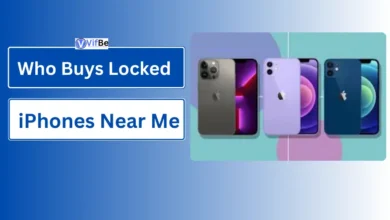Why Does the Unplugged Phone Look Like an iPhone? Exploring the Design and Features

So here are the greetings to a world of mobile technology where the very first thing that one look for in a phone, nay not to speak of building a brand sentiment is the look and feel of the new fruity messiah– the smartphone. Athlone GroupThe last product that we cannot fail to discuss is the Unplugged Phone, which a section has compared to the iPhone.
Contents Design Influence User Experience Market Trends Design Influence The present article Therefore, Why Does the Unplugged Phone Look Like an iPhone?
The Evolution of Smartphone Design
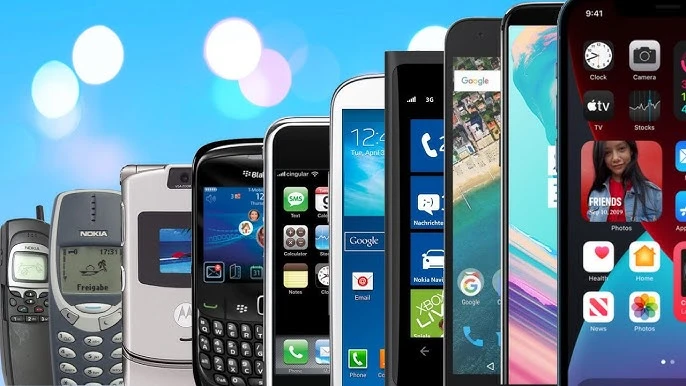
Today, smartphones are designed not like in the past. Formerly, many early models were box-like in shape while the current devices are designed with extremely thin black surfaces which explain the changing trends of consumers and technology.
This change in technology was driven mainly by giant Apple who forced-other smartphone manufacturers to try to match its aesthetic standard. The iPhone has a very large impact, its smooth curves, premium materials, and cleaner forms infiltrate virtually any device, including the relatively dumb Unplugged Phone.
Unplugged Phone:

When trying to understand why the Unplugged Phone is an iPhone one needs to investigate design insufficiency. To its credit, Unplugged Phone features an akin brigades — minimalistic design, luxurious build, and simplicity.
Such design choices reflect the design-for-aesthetic-and-function approach typical of mobile design trends. Now, the touchscreen interface also became a central feature of modern phones — similar to the touchscreen design language of the iPhone where the line in aesthetics between these two devices was blurred.
iPhone Design Influence
The minute differentiation in the design of the product of all these company is done by a team of Apple in the upper command. The organization maintains a particular approach to design work that is logic and artistic, and offers its users with a very strong emotional bond.
In our case the philosophy appears to be somehow materialized at least with regards to the same functionality that the Unplugged Phone is capable of providing a sensorial user-experience. This brings out some physical elegance on the phone and also put it in the right stead as far as the segment is concerned.
Consumer Preferences in Mobile Design
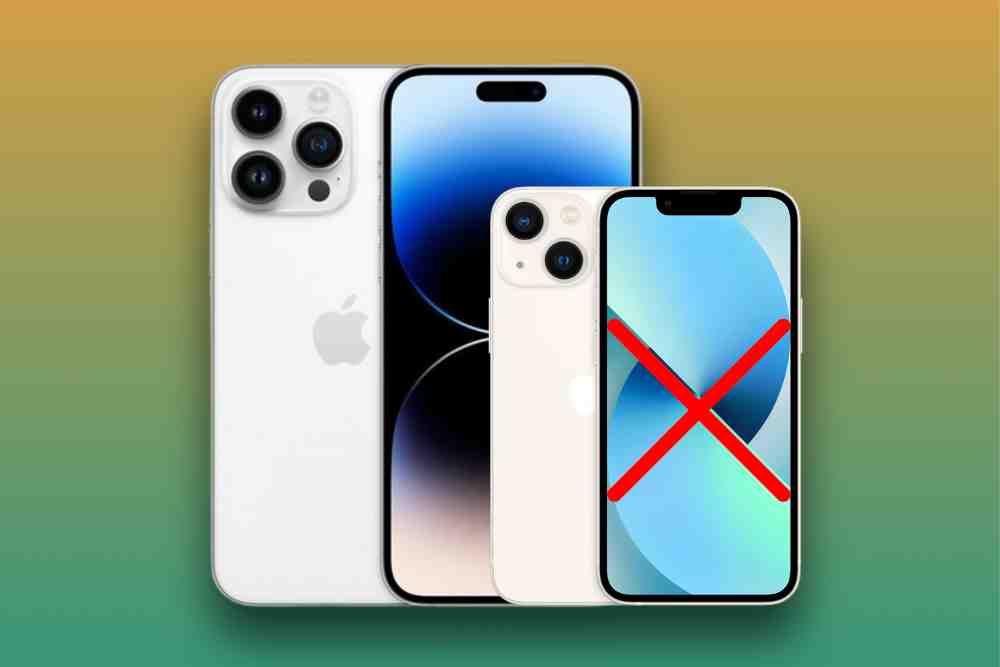
The following paper seeks to highlight the aspects that consumers consider substantive while choosing smartphones with reference to their design. The users of today’s gadget are a very selective lot, and they are interested in devices that are good to look at and to perform well. Some important features include comfort and better design, thinness, and shiny screen designs respectively.
The Unplugged Phone exploits these preferences as it mimics elements of iPhone design which have been optimised to suit the users. Such a strategic emulation of design features might be viewed as a response to the market’s requirements for both aesthetic and functional goods.
A comparison of features of iPhone and unplugged phone
If so, a comparative analysis of the two phones namely the iPhone and the Unplugged Phone is gives insight into the similarities and differences of the two innovations. Cores of the technology that has been incorporated in the iPhone is adopted in the Unplugged Phone and this includes the high quality cameras, the advanced processing power and even the operating system interfaces.
However there are differences in terms of battery life, processing speed and the software environment of the two devices. This comparison also illustrates that the Unplugged Phone meets the principles of successful design and at the same time points out the company’s special advantages in the increasingly competitive market.
The Function of Branding to the Appearance of the Phone
Industry players emphasize that brand identity plays a crucial role in determining the design of smartphones. Industries such as that of Apple have effectively developed an identity that denotes innovation in quality. This branding strategy seems to be used by the Unplugged Phone design to associate it with the look of the iPhone.
Thus, the design of the Unplugged Phone is set to resemble closely its highly-esteemedApple counterparts, even if it cannot boast the same degree of brand recognition.
Applying the framework of technological advancements on the subject of smartphone design.
New technology affects smartphone design to a significant extent. Because of current materials such as glass and aluminium it was possible to make devices that are not only slim and stylish but are also beautiful.
The same applies to the Unplugged Phone; its materials are used in similar fashion and give the gadget an iPhone look. Furthermore, various screen technologies have improved and helped phones to have higher density and much bustier colors which has improved the beauty part. They are revolutionising the concept and the perception that consumers have or attached to smartphone designs.
Counterfeit versus Original in Technology
When it comes to design, one cannot consider such an idea the totally Unplugged Phone without considering the delicate balance between mimicking and borrowing. As a matter of fact it won’t be wrong to say that Unplugged Phone has borrowed a lot from iPhone but understanding design progression in the technology is more important.
A considerable amount of successful products contain similar shapes because of recurring patterns of user expectations and practical functions. Knowing this relationship makes it easier to comprehend why the Unplugged Phone may resemble an iPhone, a fact that shows how designs often sell affectively circulate in the tech sphere.
User Experience in Smartphones
This paper argues that user experiences are a key determinant of the perception clients have on their portable devices. The Unplugged Phone seems to give emphasis on the UX by incorporating elements which are seen on iPhone like the smooth operational links and a tactile touch screen.
This way, the Unplugged Phone can attract users that appreciate the comfortable and simple to interact with devices. This adherence to effective UX standards not only makes the phone more appealing but also to place it into the competitor list.
The LTE and iPhone Like Design in Modern Smartphones
In recent years, the smartphone market has witnessed a notable trend: an ever growing parade of devices emulating the look and feel of the iPhone. Schkim can be explained by the iPhone success and its prevalence on the market that makes it a reference-point in terms of quality and design.
Most manufacturers have also followed this thought process by adopting similar curves and a plain layout as the iPhone as it will be the end product that will impress a client looking for a chic device. Therefore, each vendor extends the emphasis on chic that refers them to iPhone with such features as edge-to-edge displays, glass backs and refined frame materials.
It specifically underlines the strength of Apple’s design approach but it also introduced questions regarding creativity and distinctiveness of an industry dominated by a single brand.
Analysis of Key Design Components of the iPhone
Thus, the following major designs of the iPhone have closely shaped the design of the Unplugged Phone: These are such things as the high quality of materials, the spareness of design, and the ease of use.
The rounded edges and the high-quality glossy aluminum finish which the iPhone came equipped with have been setting the benchmark for many next generation consumers. The Unplugged Phone shares such features like the completely smooth back panel made of glass and the slim aluminum edges that not only look really nice but also make the phone quite solid in hand.
In addition, the distribution of buttons and connection ports on the iPhone and the Unplugged Phone also takes into account ergonomics according to user convenience, so that convenience is guaranteed. Such design features serve to provide an understanding of how the Unplugged Phone avoids a low profile area in order to appeal to consumer interest by capitalizing on the traditional iPhone design legacy.
Impact of iPhone’s Design
Designing of the iPhone as a piece of hardware has set the foundation of expectations among consumers in the smartphone industry. As long as Apple has been designing its products for the purpose of giving them a last appearance and touch, customers on their part are now expecting this kind of looks and touch on other gadgets.
Consumers when they come across the Unplugged Phone, they bring with them certain preconceptions of quality, utility, sleek looks, all riding on iPhone experience. This impact can cause people to become more critical of such alternative devices; anyone who finds something lacking sophistication, let along usability, would shy away from it.
Therefore, the design of the Unplugged Phone has to look like the iPhone, and also offers similar features to appeal to completioners’ interest and gain their trust in a very competitive marketplace.
A Look at Market Trends
The trend of smartphones adopting iPhone-like designs raises an important question: are all the smart phones in the market today replicating the iPhone? Even when there is an impression that many devices are simply copying Apple, the matter is much deeper.
Consumers and retailers are being met by manufacturers who anticipate these changes and the associated preference for sophisticated looking products that are not only easy to use but are constructed of high quality materials. This has led to imitation of the designs across the industry and the shift to a situation where widely similar elements of design are used as companies try to live up to the expectation set by the iphone.
That said, it is not to suggest that the pace of innovation has slowed; many brands are testing features and functionalities that set them apart from Apple but copy its design language. As such, although the two brands are visibly similar, there is an endless variety of available smartphones, which indeed demonstrates both inspiration and innovation.
What Shapes Smartphone Design Decisions?
Every decision that is made in the creation of a smartphone is psychologically motivated, as companies strive for people to connect with their product. This has attributed to the fact that the iPhone exudes classy, dependable, and up to date emotions which has made it so popular.
To some extent this is what the Unplugged Phone tries to do by adopting these design traits. Strategies such as use of glossy finishes, good colours, and harmonising interface are deliberate intentions to make the customer bond with the device being used.
This psychological attribute of design does not only determine buying behaviour but also accountability, since people go around with these items identifying themselves with them. Consequently, the form of the Unplugged Phone is configured to embrace and evoke positive emotions familiar to smartphone consumers, in the same manner as the iPhone.
Innovative Features of the Unplugged Phone:
Even though the design of the Unplugged Phone owes much to current iPhone design concepts, it seeks to build its niche around an array of groundbreaking functions. One special feature is that it has complex camera that offers the highest picture taking technology.
Thirdly, there are provided three configurable layouts of the interface, that gives a possibility to choose the most satisfactory option to every user, which is suitable for people with different tastes.
In addition, one finds the likes of a fast charging feature as well as more hours of battery back up to meet the dynamic user needs. Thus, the use of these innovative features makes the Unplugged Phone desired by those who are in search of the iPhone-like phone as well as by those, who are interested in functional improvements.
how Apple sets the standard for Smartphone Aesthetics
Apple has been leading the pack in terms of sleekness, a fact that not only shaped consumers’ preferences, but also the competitive approaches. Minimalism, use of high-quality materials, and creating a uniform interface have provided the company with recognised benchmarks throughout its product range.
This influence extends to the Unplugged Phone which will mirror Apples aesthetics commitment while trying to bring out the uniqueness factors for the given unique selling proposition. Through its rigorous policy in design consistency of its products’ design, Apple has created a recognizable corporate image that many aspire to create or achieve.
With this torch of setting trends and establishing reference point of the market Apple emerges as a crucial agent in the active process of Smartphone design evolution.
User-Centric Design: What Makes the Unplugged Phone Stand Out?
These incorporate the User-centric design element that puts the Unplugged Phone in a league of its own, excluding the iPhone. Acknowledging the user as the key factor in this design, the Unplugged Phone allows adding options that would make the phone more ergonomic.
This includes placement of buttons and switch, settings of equipment and a controlling interface that enable easy operating system control. The designers of the Unplugged Phone incorporated user opinions into the production process through market research, to see that final product matched public aspirations.
The commitment to user needs and wants does not only increase satisfaction but also engulfs satisfaction and loyalty of users who believe that their needs are being understood and met. Thus, the Unplugged Phone helps it differentiate from tens of similar offers and meet the primary and often decisive condition in the modern world of smartphones – a focus on the user.
iPhones vs. Unplugged Phone
Selecting the right material and a proper surface finish are one of the primary considerations that go into the construction of a smartphone since they are factors that impinge on the products look and feel as well as the products ability to withstand the test of time. Apple’s iPhones are often wrapped in surgical-grade stainless steel and aerospace-grade aluminium with glass that provides the perfect expensive feel.
It can also feature different finishes or textures though the construction of the Unplugged Phone must involve very high quality materials. For instance, it could use matt finish or handle with texture that are quite unique and at the same time classy looking but not overly luxurious.
Everything from choice of inputs and finishes to the tactile excites the senses and affects the user in some way, thus all aspects are important. In this way, the comparison of the materials for both similarities and differences will give consumers an understanding of how these choices impact the utility as well as appearance of these devices.
Future Trends in Smartphone Design: Lessons from the iPhone
More so, with experience of successive design and growth in the smartphone market, Hounour’s work is paramount to future design. Future novelties will likely be associated with environmental concerns; companies are destined to start searching for more environment-friendly materials and production techniques.
Furthermore, forcing smartphone manufacturers to go foldable and flexible screen, may challenge and change traditional smartphone contours thus presenting novel directions for the renewals of forms. The little-said approaches that had been applied in iPhone design, including user experience, brand image and aesthetics, use of good quality material, will remain as the strategies implemented by the new brands like the Unplugged Phone.
As these trends are approved the interaction of innovational and traditional design tendencies will determine further evolution of smartphones orbiting the idea of iPhone but at the same time shifting towards differentiation of further development.
Conclusion
Therefore, it can be postulated that the design, and consumer preferences both played a role in making the Unplugged Phone look like an iPhone, and Technological advancement within the industry. Thus, having analysed the development of the smartphone design, the role of branding, and the differences between imitation and inspiration, we answer the question about why Unplugged Phone resembles iPhone.
Therefore, while the mobile technology becomes more sophisticated, the duality of looking at the design and usability will stay instrumental to the consumer’s decision in determining the course of development for the smartphones in general.
FAQ: Related Why Does the Unplugged Phone Look Like an iPhone
Why does the Unplugged Phone resemble the iPhone?
The Unplugged Phone adopts design elements inspired by the iPhone due to Apple’s influential aesthetics and consumer preferences. The streamlined shape, premium materials, and user-friendly interface found in the iPhone have become benchmarks in the smartphone industry, prompting other manufacturers, including the creators of the Unplugged Phone, to follow suit in order to attract customers.
What key design elements from the iPhone are seen in the Unplugged Phone?
Key design elements that the Unplugged Phone shares with the iPhone include a sleek, minimalist aesthetic, rounded edges, and a high-quality glass back. These features not only enhance the visual appeal but also create a premium feel that consumers associate with high-end smartphones.
3. How has the iPhone’s design impacted consumer expectations?
The iPhone has established a high standard for smartphone design, influencing consumer expectations for quality, aesthetics, and usability. When users encounter other devices, including the Unplugged Phone, they often expect similar premium features and an intuitive user experience, which can significantly affect their purchasing decisions.
4. Are all smartphones becoming clones of the iPhone?
While many smartphones are adopting iPhone-like designs, not all devices are merely clones. Manufacturers are responding to market trends and consumer demands for sleek, high-quality designs while also incorporating unique features and functionalities that differentiate their products from the iPhone.
6. What innovative features does the Unplugged Phone offer?
The Unplugged Phone boasts innovative features such as an advanced camera system, customizable interface options, and efficient battery management. These features aim to meet the demands of modern users seeking functionality alongside design, setting it apart from the iPhone while still embracing elements of its design philosophy.

